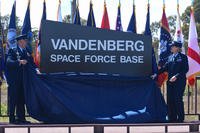CAMP GONSALVES, Okinawa, Japan — As the wind drives down the valley making trees sway, the Jungle Warfare Training Center’s next students prepare to descend. Each has been trained and equipped for the task. Each, in turn, will go over the edge and test their mettle against gravity, rappelling in the Okinawa jungle.
Marines and sailors with Force Company, 3rd Reconnaissance Battalion, 3rd Marine Division, III Marine Expeditionary Force, conducted reconnaissance training at Camp Gonsalves’ JWTC July 24 – Aug. 2.
The purpose of the training was to complete operational requirements before taking part in certification exercise with the 31st Marine Expeditionary Unit, according to Sgt. Kyle J. Becker, a reconnaissance man with the company.
“We are here to practice our tactics, techniques and procedures while conducting reconnaissance missions in the Asia-Pacific region,” said Becker. “The first few days we went over water crossing and rappelling techniques. It is a good environment (from which) to learn, and the staff has definitely helped. We are already familiar with these types of operations, but we have been able to build upon the fundamentals and try new procedures for crossing water obstacles.”
Relying on bridges or obvious crossing points is not always the best choice when in combat, according to Cpl. Blake M. Cameron, an instructor at the center.
“One good reason to conduct a water-obstacle crossing is that it greatly increases the mobility of your squad. You will not be limited to areas where the enemy may be planning to ambush you,” said Cameron.
The company received a period of instruction on water-crossing procedures and then was given the chance to practice different techniques.
“We are all amphibious, so we do a lot of water-to-land operations,” said Petty Officer 3rd Class A. Volk Sergojan, a special amphibious reconnaissance corpsman with the company. “The facilities at the jungle warfare training center provided us with a good staging point to set up standard operating procedures within our teams.”
Environmental and enemy threats are the two major elements that pose a risk when conducting a water crossing, according to Cameron.
“The environmental threat brings the drowning possibility because of either swimming ability or the water’s current,” said Cameron. “The other threat (is) enemies who may attack (our forces) during a period of vulnerability while in the water.”
The Marines and sailors with the company worked on various methods to decrease the danger of these threats.
“Each squad learned different ways to cross, so they could adapt to the requirements of the mission,” said Sergojan. “We focused on crossing speed, maintaining sound discipline, and keeping our equipment dry.”
This training evolution is the first time many of the Marines and sailors have been to the jungle warfare training center, according to Becker.
“Some of the guys have been here before and have been telling us how hard the training is, but we are looking forward to the challenges we will face and the lessons we will learn while we are here,” said Becker.

























